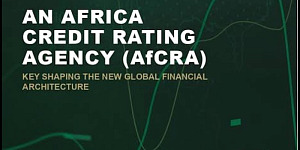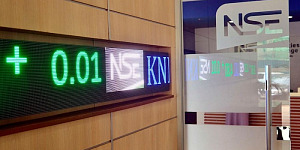Fitch Ratings has affirmed African Export-Import Bank's (Afreximbank) Long-Term Issuer Default Rating (IDR) at 'BBB-' with a Stable Outlook. Fitch has also affirmed the bank's Short-Term IDR at 'F3' and senior unsecured debt at 'BBB-'.
Key Rating Drivers
Afreximbank's ratings are driven by its intrinsic features, primarily sound levels of solvency and liquidity (both assessed at 'a-'). The 'high-risk' business environment in which the bank operates, translates into a three-notch negative adjustment to our assessment of the bank's solvency and liquidity, resulting in an intrinsic rating of 'bbb-'.
The solvency assessment of 'a-' reflects 'strong' capitalisation and a 'moderate' risk profile. The equity to assets and guarantees ratio increased to 18.5% in 2018, a 'strong' and improving ratio since 2016 (13.3%). This improvement is driven by loan repayments under COTRALF lines and a capital increase of USD862 million since 3Q16 as of end-2018, or 86% of the bank's USD1 billion paid-in capital increase target by 2021.
Fitch's usable capital to risk-weighted assets (FRA) ratio, newly introduced in 2019, stood at 20.4% at end-2018, a 'moderate' level. The adoption of IFRS9 standards in accounting for loan loss impairment, including forward-looking expected credit loss, and accounting for financial assets previously excluded from the scope of provision, resulted in a doubling in the income statement charge for provisions in 2018 (USD118.9 million from USD65.3 million in 2017). As a result, internal capital generation, as per Fitch's calculations, moderated to 9% from 10% a year earlier. Internal capital generation is strong relative to peers.
The agency expects Afreximbank's equity to assets and guarantees and FRA ratios to decline but remain within 'strong' and 'moderate' thresholds, respectively. This reflects Fitch's expectations of a high level of loan disbursements in the coming years, partly offset by disbursements of paid-in capital and high internal capital generation. In our view, Afreximbank's capitalisation remains weaker than that of most Fitch-rated regional supranational peers with similar risk profiles.
Fitch assesses Afreximbank's overall exposure to risks as 'moderate', balancing 'moderate' credit risk, with 'low' concentration risk and 'very low' equity and market risks.
At the end-2018, the bank's loan portfolio was mainly composed of loans to non-sovereign entities (80% of total loans portfolio at end-2018) whose credit quality is assessed as very weak, and of sovereign borrowers, whose weighted average credit rating is estimated at 'B-'. Fitch's assessment takes into account credit risk mitigants used by the bank (including credit insurance and cash collaterals) which provide an uplift of three notches above the average rating of loans, to 'BB-'.
The agency has revised its assessment of the bank's preferred creditor status (PCS) to 'low' from 'moderate', reflecting repayment delays of over 90 days on a loan to an African central bank in 2018 and the subsequent restructuring of this loan in 1H19. Fitch considers this event as a breach of the bank's PCS. The downward revision also reflects the increase in the share of non-sovereign loans in the total loan portfolio (80% as of end-2018 from 45% in 2016).
Non-performing loans (NPLs), as reported by the bank, remained low at 3% in 2018. However, loans accounted in Stage 3 under IFRS, closer to Fitch's own definition of NPLs, were significantly higher, at 8.2% as of end 2018, highlighting delays on loan repayments experienced by the bank. Fitch expects Stage 3 loans as a percentage of total loans to decline by the end of its forecast horizon, reflecting a combination of fast growth in the loan portfolio, recoveries, write-offs and the large share of Stage 3 loans that were regularized as of mid-2019 relative to end-2018.
We assess the bank's liquidity profile at 'a-'. Liquid assets, included discounted trade finance loans, were 1.2x short-term debt at end-2018 and Fitch expects the liquidity ratio to remain at the 'moderate' threshold by 2021. The quality of liquid assets is also deemed 'moderate' with the share of liquid assets rated 'AA'-'AAA' at 20% of the total in 2018. Afreximbank's liquidity profile is enhanced by access to additional liquidity sources, including bank credit facilities, and the short duration of the loan portfolio.
Fitch deems the business environment 'high risk', reflecting Afreximbank's strategy, characterised by a rapid growth of its banking portfolio in 'high risk' countries of operations. The importance of the bank's public mandate is assessed as 'moderate' balancing Afreximbank's strong relationship with African sovereign authorities and its ambitious 2017-21 plan against its more limited size, especially compared with regional peer African Development Bank (AfDB, AAA/Stable).
Afreximbank's rating does not benefit from shareholders support. Fitch revised its support rating to 'bb' from 'bb-' at its previous review. This revision reflected the improvement in credit quality of key shareholders (average rating of BB), following an upgrade of the sovereign ratings of Egypt (B+/Stable) and Russia (BBB/Stable). AfDB, a founding shareholder with permanent seat on the board, has a vested interest to support the bank despite the decline in its share in Afreximbank's subscribed capital.
The bank's callable capital is partially supported by medium-term credit risk mitigation instruments (71% of total callable capital), which provide an one-notch uplift over the bank's key shareholders' average credit quality, translating into a support capacity assessment of 'bb+'. Shareholders' support propensity is evaluated as 'moderate', in line with the role of the bank relative to the region's economy, therefore resulting in a support rating of 'bb'.
RATING SENSITIVITIES
The main factors that may trigger positive rating action are:
- A combined improvement in the bank's solvency and liquidity profiles. This could stem from stronger capitalisation combined with higher coverage of short-term debt by liquid assets or improvement in the share of 'AAA'-'AA' treasury assets.
The main factors that could collectively or separately trigger negative rating action are:
- Deterioration in solvency metrics, stemming from weaker-than-expected paid-in capital payment, higher-than-anticipated loan growth or failure to reduce Stage 3 loans as a percentage of total loans.
- Further overdue payments on loans extended to central banks in Africa. - Deterioration in Fitch's assessment of liquidity, which could stem from weaker coverage of short-term debt by liquid assets, decline in the share of 'AAA'-'AA' treasury assets or deterioration in access to capital market and other sources of liquidity.
Key Assumptions
Fitch assumes no substantial changes in the bank's lending strategy in the coming years, compared with the parameters it has in 2019.



























































